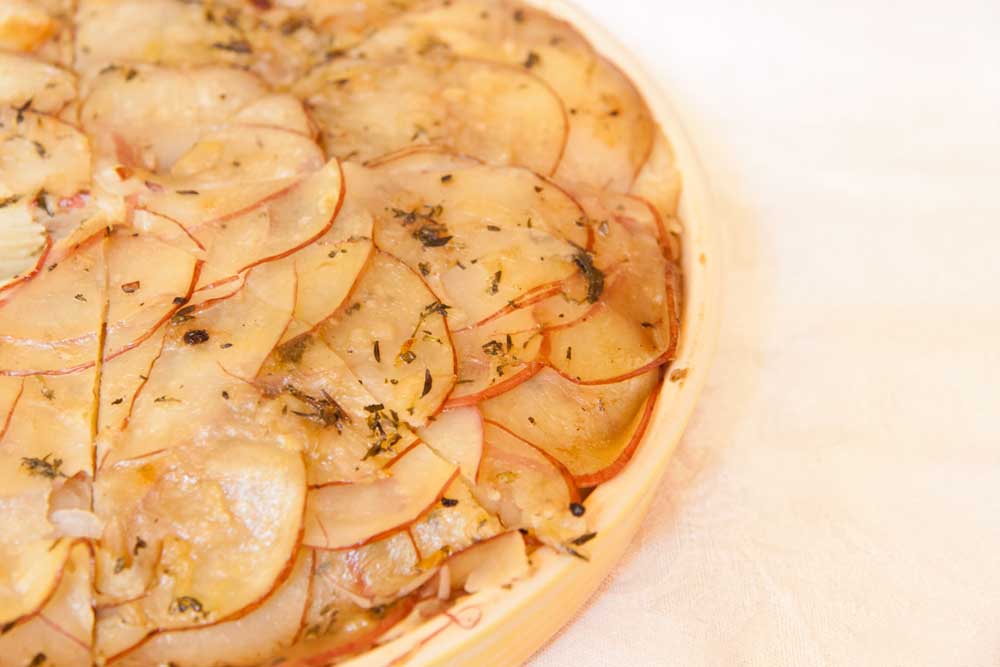a Healthy Side to
Published 12:00 am Saturday, September 6, 2014

- a Healthy Side to
Fall in Central Oregon brings wonderful things. Much-welcomed cooler evenings, changing colors, and the first harvests of many local varieties of potatoes. These delectable potatoes are versatile storage vegetables that provide an energizing supply of carbohydrates to fuel us through fall and winter.
Potatoes may have been scapegoated as unhealthy foods, but if prepared right and eaten in conjunction with other healthy foods, they are a valuable source of nutrition. Potatoes are low in sodium and a good source of vitamin C, vitamin B-6, potassium, fiber and other nutrients, especially if the skin is left on, nearly doubling the amount of fiber.
Trending
The versatility of potatoes makes them an easy addition to a regular diet. They can be cooked with almost any method – whether baked, roasted, pan fried, grilled or boiled – and combined with a wide range of flavor enhancers. The key element to enjoying potatoes on a regular basis is to be mindful of what you are eating along with them.
The American Diabetes Association and Mayo Clinic both include potatoes in their healthy eating plans, using recipes that utilize healthy oils and low- or non-fat dairy products instead of high-fat flavor additions. And while the high-glycemic nature of potatoes can cause spikes in blood sugar levels, this applies only when eaten alone. When combined with a protein source and other vegetables, their effect on blood sugar levels is less dramatic.
As with many foods, potatoes should be eaten as a whole food to obtain the most nutrition. Whole foods are simply foods that are unprocessed and unrefined. In the case of potatoes, it means in the form in which they came from the ground. For optimum health, processed potato products should be avoided; what is left of the potato is mainly the starch, minus the essential vitamins, minerals and fiber.
Popular potato varieties include Russet, Red Bliss, Purple Viking, While Rose, Yellow Fingerling, Yellow Finn and Yukon Gold. Some of these, and others, are grown here in Central Oregon and can be found in stores, farm stands and farmer’s markets, labeled “local.” Each type has a slightly different texture and skin quality, making it more suitable for a particular style of preparation (see “A Perfect Match”).
The best potato dishes are ones that remind us of the comfort foods we were brought up on, but many of those favorites are loaded with calories and saturated fats. To remake comforting potato dishes that can be eaten regularly – and in good conscience – it helps to learn a few tricks of the trade.
With foods as naturally delicious as potatoes, healthy side dishes are easily attainable. Try adding olive oil instead of butter for mashed potatoes, chicken stock in place of heavy cream for scalloped potatoes and baking sliced potatoes in place of deep frying in oil. Basic flavor builders such as onions, shallots, garlic and herbs and spices can also increase the satisfaction of most any potato dish, without added fat.
Trending
Knowing that most of a potato’s nutrition is found in its skin, potato dishes that do not require a peeler are preferable. For the best nutritional bang for your buck, try baking a whole potato and eating it skin and all, or make “smashed” potatoes using unpeeled, thin-skinned potatoes such as Red Bliss, Yukon Gold or even Yellow Fingerlings, instead of peeled Russets.
Potatoes can also be combined with other root vegetables with tasty results. Roasting a variety of root vegetables, tossed in olive oil and chopped garlic or herbs, makes a colorful side dish to accompany roasted meats or poultry. Incorporating other root vegetables – such as parsnips, celery root or turnips – in mashed potatoes adds earthy flavor, while increasing nutrition.
Store potatoes well – in a cool, dark, well-ventilated place – and they will keep for several weeks. If you can resist cooking them that long.








